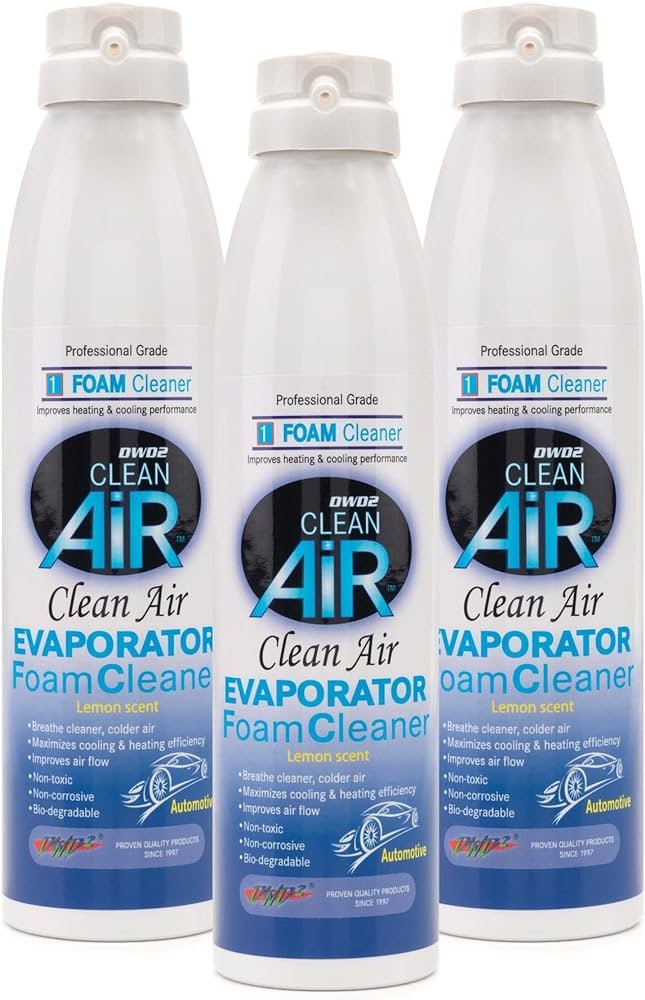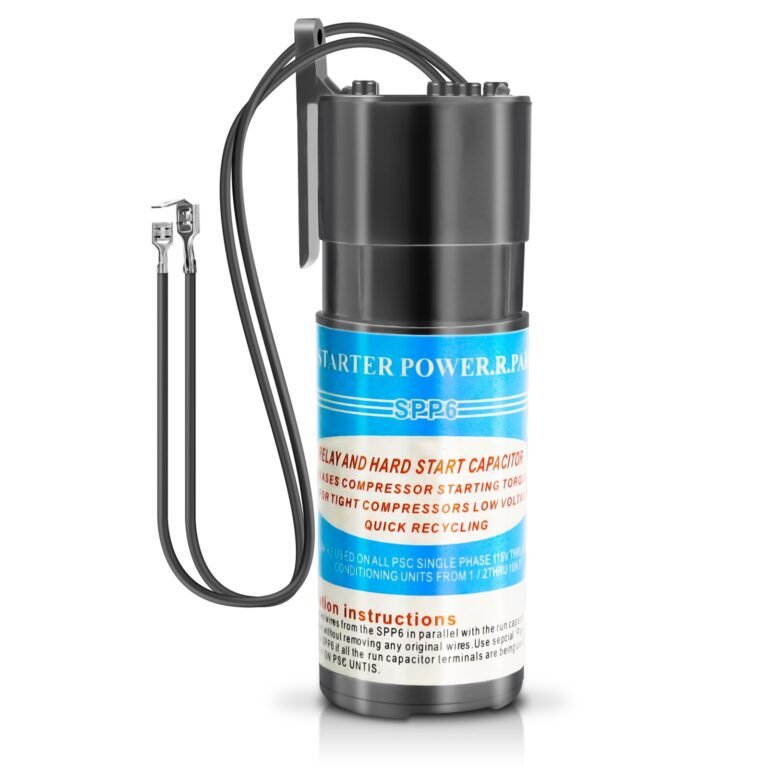Is There Supposed to Be Styrofoam in My Air Conditioner? Discover the Truth Here!
No, there should not be Styrofoam in your air conditioner. If you find Styrofoam in your air conditioner, it may indicate a problem or damage to the unit.
It is important to identify the source of the Styrofoam and address it to ensure proper functioning of your air conditioner. We will discuss the potential reasons for the presence of Styrofoam in your air conditioner, the potential issues it may cause, and the steps to take to resolve the problem.
Understanding the importance of a properly functioning air conditioner and being proactive in maintaining it can help you avoid costly repairs and ensure optimal performance and efficiency.
What Is Styrofoam In An Air Conditioner?
Styrofoam is a common component found in air conditioners, and it serves several important purposes within the cooling system. Styrofoam is a type of insulating material that helps to regulate the temperature inside the unit and prevent heat from escaping. Its main function is to effectively insulate the air conditioner and ensure that the cool air produced is distributed evenly throughout the space it is intended to cool.
Another important role of Styrofoam in an air conditioner is to reduce noise levels. The material helps to absorb and dampen vibrations and sounds produced by the unit, resulting in a quieter operation. Additionally, Styrofoam also contributes to the overall functionality of the air conditioner by providing structural support and stability to various components.
In conclusion, Styrofoam in an air conditioner is not only a beneficial insulator but also plays a crucial role in reducing noise levels and providing stability to the unit. Its presence is an integral part of the efficient functioning of an air conditioner, ensuring optimal performance and comfort.
Understanding The Different Components In An Air Conditioner
Understanding the Different Components in an Air Conditioner
An air conditioner consists of several essential components that work together to provide cool air. One of these components is styrofoam, which has a specific role in the functioning of the system. The styrofoam’s primary role is to provide insulation and protect other critical parts from moisture and temperature variations.
The styrofoam interacts with the refrigeration cycle in the air conditioner. It helps in maintaining the desired temperature by insulating the evaporator coil and preventing heat transfer. By acting as a barrier, it keeps the cool air inside and prevents warm air from entering the system.
The styrofoam is just one of the many components in an air conditioner, and its presence is necessary for the proper functioning of the system. Understanding its role in relation to other components and its interaction with the refrigeration cycle can help ensure the efficient performance of your air conditioner.
Pros And Cons Of Styrofoam In Air Conditioners
Advantages of using Styrofoam in the AC system:
- 1. Excellent Insulation: Styrofoam is known for its high insulating properties, which can help improve the energy efficiency of your air conditioner. It can prevent heat transfer and keep the cool air inside the AC unit.
- 2. Lightweight: Styrofoam is lightweight, making it easy to handle and install in air conditioners. It does not add significant weight to the AC system.
- 3. Cost-effective: Styrofoam is relatively inexpensive compared to other insulating materials. It provides a cost-effective solution for improving the performance of your air conditioner.
Potential drawbacks and limitations of Styrofoam:
- 1. Fragility: Styrofoam is fragile and can easily break or crumble if mishandled during installation or maintenance. Care must be taken to ensure its integrity is maintained.
- 2. Moisture Absorption: Styrofoam can absorb moisture, leading to mold and mildew growth if not properly sealed. Regular inspection and maintenance are necessary to prevent this issue.
Environmental impact and sustainability concerns:
Styrofoam is a petroleum-based product, and its production contributes to carbon emissions and environmental pollution. It is not biodegradable and can persist in the environment for hundreds of years. Proper disposal and recycling methods should be followed to minimize its impact on the ecosystem.
Alternatives To Styrofoam In Air Conditioners
Styrofoam insulation is commonly used in air conditioners for its excellent thermal properties. However, if you are looking for alternatives to Styrofoam, there are several options available. These materials can provide efficient insulation without the environmental concerns associated with Styrofoam.
Introduction to alternative materials for insulation:
| Material | Description |
|---|---|
| Mineral wool | Composed of natural or synthetic fibers, it offers good insulation and fire resistance. |
| Cellulose | Recycled paper material treated with fire retardants, providing effective insulation. |
| Fiberglass | Made of fine glass fibers, it is widely used for insulation due to its affordability and durability. |
| Polyurethane foam | This foam provides exceptional insulation and sealing properties, reducing energy consumption. |
Comparison of the different options available:
- All the alternative materials mentioned above offer good insulation.
- Mineral wool and cellulose provide excellent fire resistance.
- Fiberglass and polyurethane foam are affordable and durable.
- Polyurethane foam has the additional benefit of sealing gaps, reducing energy loss.
Pros and cons of using non-Styrofoam alternatives:
- Pros: Environmentally friendly, efficient insulation, fire-resistant options available, affordable and durable choices.
- Cons: Depending on the material, it may require professional installation, potential allergenic properties of certain options.
Tips For Maintaining An Air Conditioner With Styrofoam
Proper cleaning and maintenance of the Styrofoam components in your air conditioner is essential for efficient performance and longevity. Here are some guidelines to keep in mind:
- Cleaning: Regularly inspect and clean the Styrofoam parts to prevent dust and debris buildup. Use a soft brush or cloth to gently wipe away any dirt or residue. Avoid using harsh chemicals or abrasive materials that could damage the foam.
- Maintaining: To ensure the durability of the Styrofoam, avoid placing heavy objects on it or applying excessive pressure. Make sure it is properly secured and protected from any accidental impacts or collisions.
- Replacement or repair: Pay attention to any signs of damage, such as cracks, dents, or deterioration in the Styrofoam. If you notice any of these issues, consider getting it replaced or repaired by a professional to maintain the optimal functioning of your air conditioner.

Credit: www.nytimes.com
Frequently Asked Questions For Is There Supposed To Be Styrofoam In My Air Conditioner
Can Styrofoam Be Found In Air Conditioners?
Yes, Styrofoam is often used in air conditioners as an insulating material to prevent condensation and to reduce vibration and noise. It helps ensure efficient cooling and protects the internal components from damage.
What Is The Purpose Of Styrofoam In An Air Conditioner?
The purpose of Styrofoam in an air conditioner is to provide insulation, which helps maintain a constant temperature inside the unit. It also helps reduce condensation and prevents damage to the internal components from vibrations and noise.
Is It Normal To Have Styrofoam Coming Out Of My Air Conditioner?
Finding small pieces of Styrofoam coming out of your air conditioner is not uncommon. During the manufacturing process, foam may break off and find its way out of the unit. However, if you notice large chunks or excessive amounts of Styrofoam, it is best to contact a professional to inspect and fix the issue.
Can Styrofoam Cause Any Problems In My Air Conditioner?
If the Styrofoam in your air conditioner becomes loose or crumbles, it can potentially cause airflow blockage, reduce the unit’s efficiency, or even damage the internal components. It is important to regularly inspect your air conditioner and address any issues with the Styrofoam promptly to prevent further problems.
Conclusion
To sum up, finding styrofoam in your air conditioner might be a cause for concern. While it is not normal, it could indicate a problem with the unit. It is important to properly address this issue by contacting a professional technician who can diagnose and fix any potential issues.
Regular maintenance and inspections are key to ensuring the long-lasting performance of your air conditioner.








It’s actually a great and useful piece of information. I am happy that yyou simply shared this helpful information with us.
Please stay us informed like this. Thank you for sharing. http://Boyarka-inform.com/